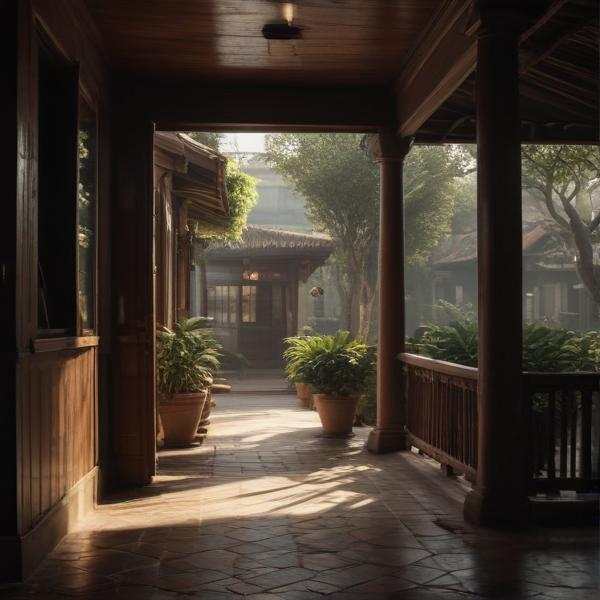基本信息 (Basic Information)
含义与用法 (Meanings & Usage)
中文核心释义 (Core Chinese Meaning): 过时的;使用时间长的;不是新的。
英文核心释义 (Core English Meaning): old; not new; outdated; used for a long time.
象形意义 / 为何这么写 (Pictographic Meaning / Writing Rationale)
文言文释义 (Classical Chinese Meaning)
与现代意义相近,多用于表示‘陈旧’、‘以前的’。Similar to modern meaning, mostly referring to 'old' or 'from the past'.
深入学习 (In-depth Study)
字源故事 (Origin Story)
字形演变 (Character Evolution)
常用词语和例句 (Common Words & Examples)
旧书 (old book; second-hand book)
我喜欢在市场上淘旧书。
Eng: I like to hunt for old books at the market.
旧衣 (old clothes)
这些旧衣可以捐给需要的人。
Eng: These old clothes can be donated to people in need.
怀旧 (nostalgic; nostalgia)
听到这首歌让我感到怀旧。
Eng: Hearing this song makes me feel nostalgic.
旧友 (old friend)
他和一位旧友在咖啡店重逢了。
Eng: He reunited with an old friend at the café.
相关成语 (Related Idioms)
旧地重游
Meaning: to revisit former places; to return to an old haunt
多语言翻译 (核心释义) (Translations (Core Meaning))
- French: vieux, ancien
- German: alt, ehemalig
- Spanish: viejo, antiguo
- Italian: vecchio, antico
- Portuguese: velho, antigo
- Russian: старый, бывший
- Arabic: قديم، عتيق
- Persian: کهنه، قدیمی
- Dutch: oud, vroeger
- Polish: stary, dawny
- Vietnamese: cũ, xưa
- Ukrainian: старий, давній
视频学习资源 (Video Learning Resources)
通过以下链接在热门视频网站搜索 "旧" 的更多讲解:
Search for more explanations of "旧" on popular video sites:
- 在 Bilibili.com 搜索 "旧 字源 说文解字" (Search on Bilibili)
- 在 YouTube.com 搜索 "旧 character origin etymology" (Search on YouTube)
网络参考 (Web References for "旧") ()
网络内容摘要 (Web Content Summary):
旧是一个表示“过去的”、“曾经使用过的”或“陈旧”的汉字,常见于描述物品、思想等的非新状态。 旧 (jiù) is a Chinese character meaning "old," "used," or "former." It is commonly used to describe things that are not new.
- 字源与象形: “旧”字最早见于甲骨文和金文,最初的字形像一只“臼”(石臼),意指反复使用、磨损而变旧。后加“|”表示门窗的形状,意思为年久失修的门窗。 Etymology & pictograph: The early forms of “旧” in oracle bone and bronze inscriptions resemble a stone mortar (“臼”), implying wear from repeated use. Later forms added a vertical stroke, suggesting an old window or door—symbolizing age and disrepair.
- 常用搭配: 常见词语有“旧衣服”(old clothes)、“旧朋友”(old friend)、“故旧”(old acquaintances)、“新旧交替”(the alternation of old and new)。 Common collocations: Used in words like "旧衣服" (old clothes), "旧朋友" (old friend), "故旧" (old acquaintances), "新旧交替" (the alternation of old and new).
- 易混淆点: “旧”与“就”在发音和书写上容易混淆,注意“旧”用于表示“过去的”含义。 Common confusion: “旧” (old) is sometimes confused with “就” (then, just), but “旧” refers specifically to the meaning of “past” or “not new.”
- 成语: 常见成语如“除旧布新”(get rid of the old and establish the new),表达革新思想。 Idioms: For example, “除旧布新” (to get rid of the old and establish the new), which expresses the idea of innovation.
总结: “旧”不仅仅表示物理上的“旧”,还常用于感情、思想等抽象概念,在汉语中使用广泛。 Summary: “旧” conveys both literal and figurative senses of "old" and is widely used in modern Chinese.
Chinese Etymology 字源
Chinese Etymology 字源, Chinese character history and ancient Chinaese character (Orachle characters, Bronze characters, Seal characters, Shuowen Jiezi, Liushutong) analysis and research 汉字历史和古汉字(甲骨文, 金文, 篆字, 说文解字, 六书通)研究与分析. Search 100K+ ancient Chinese characters and etymology. 查询10万+古汉字和字源.
字形演变_汉字字源_汉字演变过程查询_字形演变查询_甲骨文金文对照表
首页 > 汉语字典 > 字形演变 【书法字典】 【象形文字典】
更多图片 (旧 More Images) ()
